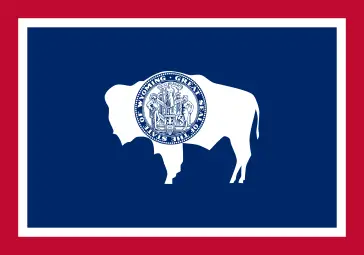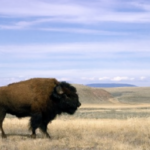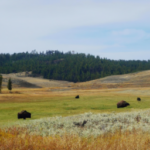Understanding Flags: Icons of Identity

Significance of Flags
Flags are not just colorful pieces of cloth; they are powerful symbols of identity, representing nations, states, cities, organizations, and more. These iconic symbols hold great importance, as they visually convey the values, history, and collective identity of a group of people. State flags, in particular, serve as a visual representation of a state’s unique character and heritage.
Various Designs on US State Flags
In the United States, each state has its own flag, uniquely designed to capture the essence of the state it represents. From simple designs featuring solid colors and basic shapes to more complex patterns and symbols, state flags in the U.S. exhibit a wide range of artistic expressions.
Common Symbols Found on US State Flags
While each state flag has its distinct design, some common symbols can be found across multiple flags. Examples of these symbols include stars, representing the number of states in the Union, and stripes, symbolizing the original thirteen colonies. Other symbols often seen on state flags include seals, state mottoes, and important historical figures.
The American Bison: An Iconic Symbol
Historical Significance of the American Bison
The American bison, also known as the buffalo, has played a significant role in the history of North America. Native American tribes relied on the bison for sustenance, utilizing every part of the animal for food, clothing, shelter, and tools. The bison also became an integral part of the cultural and spiritual beliefs of many tribes, symbolizing strength, abundance, and connection to the land.
Representation of Bison in Various State Flags
While many states have chosen symbols that embody their unique identity for their flags, only one state has a silhouette of an American bison in its middle: Wyoming. The image of the bison on Wyoming’s state flag is a nod to the historical and cultural significance of this majestic creature in the state’s heritage.
Role of Bison in American Cultural and Natural Heritage
The bison holds a special place in American cultural and natural heritage. Recognizing its importance, Wyoming has chosen to prominently feature the bison on its state flag, honoring the animal’s historical significance to the state’s past and its continued importance in the present.
Exploring the Wyoming State Flag
Overview of Wyoming State Flag
The Wyoming state flag, like the flags of other states, is a visual representation of the state’s unique identity. It consists of a field of blue with a white silhouette of an American bison in the center. Above the bison, the words “Wyoming” are written in red. The lower part of the flag features a white seal depicting various symbols and the state’s motto.

Introduction to the Historical Background of the Flag
The design of the Wyoming state flag dates back to 1916 when it was adopted by the 14th Wyoming Legislature. It was created to celebrate the state’s cultural heritage and its natural beauty, with the bison symbolizing the historical and ecological significance of the animal in Wyoming.
Detailed Description of the Flag’s Design
The Wyoming state flag’s design is simple yet powerful. The blue field represents loyalty and justice, while the white silhouette of the American bison stands as a focal point, symbolizing the state’s history and heritage. The red letters spelling out “Wyoming” above the bison add a bold touch, capturing the state’s vibrant spirit.
Symbolism of the Bison in Wyoming Flag
The bison featured on the Wyoming state flag holds deep symbolism. It represents the strength, resilience, and endurance of the people of Wyoming, mirroring the qualities exhibited by this mighty creature throughout history. It serves as a reminder of the state’s roots and its connection to the natural world.
History of the Wyoming State Flag
Early Days of the Wyoming Flag
The history of the Wyoming state flag begins in 1903 when a design featuring the state seal on a blue field was adopted as the official flag of Wyoming. However, this design did not adequately capture the state’s unique identity and heritage, leading to the creation of a new flag in 1916.
Adoption and Evolution of the Design
In 1916, the Wyoming Legislature passed a bill officially adopting a new design for the state flag. This design, featuring the silhouette of the American bison, was chosen to better represent Wyoming’s cultural and natural heritage. Since its adoption, the flag’s design has remained largely unchanged, solidifying its significance and recognition.
Major Changes to the Flag Over Time
While the overall design and symbolism of the Wyoming state flag have remained consistent since its adoption, some minor changes have occurred over the years. These changes primarily involved modifications to the size and proportions of the flag’s elements to ensure visual harmony and clarity.
Symbols and Their Meanings on the Wyoming Flag
The Bison Silhouette
The most prominent symbol on the Wyoming state flag is the silhouette of the American bison. This symbolizes the historical and cultural importance of the bison in Wyoming’s past and the state’s commitment to preserving its natural heritage.
The Great Seal of Wyoming
Displayed in the lower part of the flag is the Great Seal of Wyoming, featuring various symbols. These symbols include a shield with mountains and a river, representing the natural beauty of Wyoming, along with two female figures representing the state’s motto, “Equal Rights.” The Great Seal serves as a reminder of the state’s values and principles.
The State Banner and its Significance
Beneath the Great Seal lies a red banner with the words “Under God the People Rule.” This banner emphasizes Wyoming’s commitment to democratic values and the power of its citizens in shaping the state’s destiny.
The Bison and Wyoming’s Cultural Significance
Bison in Wyoming’s History
The bison played a crucial role in Wyoming’s history, particularly for Native American tribes and early settlers. The animal provided sustenance and essential resources, ensuring survival and shaping the cultural practices and traditions of the region.
Bison: A Cultural and Spiritual Symbol
In addition to its practical significance, the bison held deep cultural and spiritual significance for the people of Wyoming. Many Native American tribes considered the bison a sacred animal, embodying strength, wisdom, and a deep connection to the land. This reverence for the bison continues to be reflected in Wyoming’s cultural identity.
Retelling Tradition: Bison in Wyoming’s Folklore
Wyoming’s folklore and storytelling traditions often include tales of the bison, highlighting their importance in the region’s history and culture. These stories serve as a way to pass down the wisdom, values, and traditions associated with the bison from one generation to the next.
Protecting the Bison: Conservation Efforts in Wyoming
Current State of Bison in Wyoming
While the American bison faced near-extinction in the past, conservation efforts have led to a significant recovery of their populations. In Wyoming, bison can be found in various protected areas, such as Yellowstone National Park and the National Elk Refuge, ensuring their long-term survival.
Conservation Efforts for Bison
Wyoming takes an active role in preserving and protecting the bison. This includes managing their populations, promoting sustainable grazing practices, and working with Native American tribes to ensure the integration of traditional knowledge and conservation practices.
Role of the Bison in Wyoming Ecosystem
The bison plays a crucial role in Wyoming’s ecosystem. Their grazing habits help maintain the diversity and health of native grasslands, benefitting numerous species, including birds, small mammals, and insects. By preserving bison populations, Wyoming contributes to the overall health and balance of its natural environment.
Wyoming’s Flag in Contemporary Culture
Use of Wyoming’s Flag in Public Spaces
Wyoming’s flag is proudly displayed in various public spaces throughout the state. From government buildings to schools, sports arenas, and even private residences, the flag serves as a visual representation of Wyoming’s collective identity and heritage.
Representation of Wyoming’s Flag in Media and Popular Culture
Wyoming’s flag has also made appearances in media and popular culture. It is often featured in movies, television shows, and advertisements highlighting the state’s natural beauty, historical significance, and the spirit of its people.
Patriotic Significance of the Flag to Locals
For the people of Wyoming, their state flag holds deep patriotic significance. It serves as a source of pride, a reminder of their state’s unique history, and a symbol of their enduring commitment to the values and principles that define Wyoming’s identity.
Comparing Wyoming’s Flag with Other State Flags
Flags With Similar Design Elements
While Wyoming’s flag stands out with its silhouette of an American bison, other state flags also incorporate similar design elements. For example, Kansas features a buffalo, and Montana includes a bison skull. These design choices connect these states to their respective histories and natural heritage.
Distinctive Characteristics of Wyoming’s Flag
Despite the presence of other state flags featuring bison-related symbols, Wyoming’s flag remains distinctive. Its use of a strong silhouette and bold colors, along with the placement of the bison front and center, sets it apart and ensures its recognition and unique representation of the state.
Importance of State Flags in the USA
Function of State Flags
State flags serve multiple functions in the United States. They visually represent each state, acting as a symbol of identification, distinguishing one state from another. State flags also serve as a means of fostering unity and pride among residents, reinforcing a sense of belonging and shared identity.
State Flag Etiquettes and Display Rules
State flags, including Wyoming’s, are subject to certain etiquette and display rules. These rules dictate proper handling, respectful storage, and appropriate times and places for flag display. Adhering to these guidelines ensures that state flags are treated with the respect they deserve as symbols of statehood and heritage.
State Flags as Symbols of Pride and History
State flags are powerful symbols of pride and history. They represent the unique characteristics, values, and heritage of each state. By displaying and honoring state flags, individuals and communities celebrate their shared history, cultural diversity, and the enduring spirit of their state.










